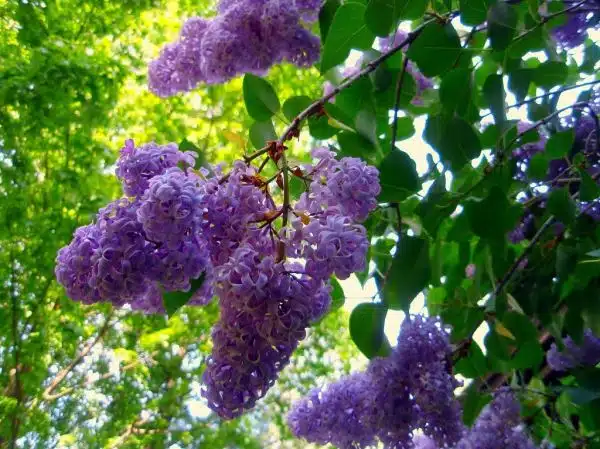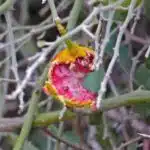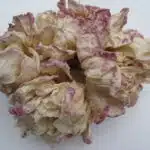Lilac bushes are a popular ornamental plant that can add charm and beauty to any garden or landscape. However, without proper pruning techniques, these bushes may become overgrown and unsightly. Pruning is an essential task in maintaining the health and growth of lilac bushes.
In this article, we will discuss the best practices for pruning lilac bushes, including when to prune, what tools to use, and how to properly shape the bush. Whether you are a seasoned gardener or a novice enthusiast, this guide will provide valuable information on how to care for your lilac bushes so that they thrive and continue to enhance your outdoor space for years to come.
Understanding The Importance Of Pruning
Lilac bushes are a popular choice for many garden enthusiasts due to their vibrant blooms and sweet fragrance. However, these shrubs require regular pruning to maintain their health and beauty. Pruning is an essential technique that involves selectively removing plant parts to improve its growth, structure, and overall appearance. The benefits of pruning lilac bushes are numerous, including increased flower production, improved air circulation, and the prevention of disease.
One of the primary benefits of pruning lilac bushes is that it promotes flower production. By removing dead or diseased wood and cutting back old branches, you can stimulate new growth that produces more flowers. Additionally, pruning encourages the formation of lateral buds which will form new shoots and produce more flowers in the following years.
Techniques for pruning lilac bushes differ depending on the type of bush you have. For example, common lilacs should be pruned immediately after flowering in late spring or early summer. On the other hand, tree lilacs should be pruned during their dormant period in late winter or early spring when they are not actively growing. It’s important to understand these differences so that you can properly care for your lilac bush and maximize its bloom potential.
With proper pruning techniques, your lilac bush can thrive for years to come. In the next section, we will discuss how to identify different types of lilac bushes so that you can determine which techniques are appropriate for your specific plant.
Identifying The Different Types Of Lilac Bushes
Lilac bushes are popular garden plants that add charm and elegance to any landscape. There are several types of lilac bushes, each with its unique characteristics. One of the most common types is the Common Lilac (Syringa vulgaris), which is a deciduous shrub that can grow up to 20 feet tall. This variety produces fragrant flowers in shades of purple, pink, and white.
Another type of lilac bush is the Dwarf Korean Lilac (Syringa meyeri). As the name suggests, this variety is smaller than the Common Lilac and grows up to only 4-6 feet tall. The Dwarf Korean Lilac blooms earlier than other varieties, producing flowers in early spring. Its flowers are also less fragrant than those of the Common Lilac but still add a beautiful touch to any garden.
The Persian Lilac (Syringa x persica) is another variety that grows up to 8-10 feet tall and produces clusters of small lavender or pink flowers in late spring. This type is drought-resistant and thrives well in hot climates. Knowing the characteristics of each type can help you choose which variety will suit your garden best and make it easier for you to care for them properly.
Understanding the different types of lilacs available on the market can help you select the right one for your garden’s needs. Once you have identified which type of lilac bush you want to grow, it’s essential to know when to prune them properly. In the next section, we will discuss when and how to prune your lilac bushes so they can thrive healthily and be more attractive in your garden setting.
When To Prune Lilac Bushes
- Pruning lilac bushes is best done in late winter or early spring, before new growth begins.
- The two types of pruning most commonly used on lilac bushes are heading and thinning.
- Heading involves cutting back branches to encourage branching and create a more compact shape, while thinning involves removing entire stems.
- After pruning, it is important to apply a balanced fertilizer and water the plant deeply to promote healthy new growth.
- Mulching around the base of the plant will help retain moisture and reduce weeds.
- Proper pruning of lilac bushes will help ensure that the plant remains healthy and produces abundant blooms.
Best Time Of Year
When it comes to pruning lilac bushes, timing is crucial. The best time of year to prune your lilacs is in the late spring or early summer after they have finished blooming. This period will provide enough time for the plant’s new growth to mature and produce buds for next year’s blooms.
Pruning techniques are equally important when caring for your lilac bushes. One common mistake when pruning lilacs is over-pruning, which can result in stunted growth and fewer flowers. To avoid this, it is recommended that you remove only a third of the oldest branches each year, leaving the younger ones intact.
Overall, proper pruning of your lilac bushes will enhance their health and beauty. By following these simple guidelines on timing and technique, you can successfully maintain your plants’ optimal growth potential and enjoy beautiful blooms year after year. Remember that with any gardening task, patience is key as results may not be immediate but with consistent care, you will see improvement over time.
Types Of Pruning
Pruning lilac bushes is an essential task for maintaining their health and beauty. Timing is crucial to ensure proper growth, but it is also important to understand the types of pruning techniques that you can apply. Pruning techniques include rejuvenation and renewal pruning, thinning and selective pruning, heading back or topping, training methods such as espaliering and pollarding, and deadheading.
Rejuvenation and renewal pruning involves removing old branches at the base of the plant to stimulate new growth. Thinning and selective pruning involve carefully removing weak or damaged branches to improve air circulation and sunlight penetration in the center of the plant. Heading back or topping involves cutting back lateral branches to promote bushier growth. Training methods such as espaliering involve shaping the plant into a specific form while pollarding requires annual cutting back of all branches to encourage new growth.
Deadheading is another type of pruning technique that focuses on removing spent blooms before they set seed. This promotes more flowers over a longer period by directing energy towards new flower production instead of seed formation. The key takeaway is that understanding different types of pruning techniques will help you make informed decisions about how to care for your lilac bushes properly. With consistent care using these techniques, you can enjoy beautiful blooms year after year while keeping your plants healthy and thriving.
Aftercare
Proper aftercare is crucial for keeping lilac bushes healthy and thriving. Understanding soil requirements is the first step in providing optimal care for your plants. Lilacs prefer well-draining, nutrient-rich soil that is slightly acidic with a pH of 6.0 to 7.5. Adding organic matter such as compost or aged manure to the soil can improve its texture and fertility, promoting healthy root growth and overall plant health.
Managing pests is also an important aspect of aftercare. Common pests that may affect lilac bushes include aphids, spider mites, and scale insects. Regularly inspecting your plants for signs of infestation and treating them promptly can help prevent damage to the foliage and flowers. Insecticidal soap or neem oil are effective options for controlling these pests without harming beneficial insects.
Proper watering and fertilization are also critical components of aftercare. Lilacs require regular watering during dry periods, but overwatering can lead to root rot and other problems. Fertilizing once a year with a balanced fertilizer specifically formulated for flowering shrubs can provide essential nutrients for healthy growth and abundant blooms. Overall, with proper aftercare practices in place, your lilac bushes can continue to thrive year after year, providing beautiful blooms and lasting enjoyment for both you and others around you who appreciate the beauty of nature.
Choosing The Right Tools For Pruning
Proper pruning requires selecting appropriate tools that will help you achieve your desired results. It is important to choose the right tool for the job, as the wrong one can damage your lilac bush or injure you in the process. Some of the most commonly used tools for pruning include hand pruners, loppers, and pruning saws.
Hand pruners are ideal for small branches that are less than 1/2 inch in diameter. They come in two types: bypass and anvil. Bypass pruners work like scissors and make clean cuts on live stems, while anvil pruners have a straight blade that rests on a flat surface and crushes stems. Loppers are best for larger branches between 1/2 and 2 inches in diameter. They have long handles that provide leverage to cut through thicker branches with ease. Pruning saws are designed to cut through larger branches that are too big for loppers or hand pruners.
When using any tool for pruning, it is important to take safety precautions seriously. Wear gloves to protect your hands from thorns and other sharp edges on the plants you’re pruning. Eye protection is also recommended when using power tools or pruning saws. Always make sure your tools are clean and sharp before beginning to prune, as dull blades can cause more harm than good.
- Make sure you select the right tool for each branch size.
- Wear gloves and eye protection when necessary.
- Keep your tools clean and sharp at all times.
In order to ensure a healthy lilac bush, proper pruning techniques must be followed with care and precision. Preparing your lilac bush for pruning involves knowing what time of year is best for cutting back branches, how much should be removed at once, and where to make cuts without damaging the plant’s health or structure.
Preparing Your Lilac Bush For Pruning
Choosing the Right Tools for Pruning is crucial in maintaining the health and aesthetic appeal of your lilac bushes. Now that you have gathered all the necessary tools, it’s time to prepare your lilac bush for pruning. Before starting, it’s important to understand the proper Pruning techniques to avoid common mistakes.
Pruning techniques vary depending on the age and size of your lilac bush. If you’re dealing with a young bush, focus on removing only dead or damaged branches. For mature bushes, prune one-third of the oldest stems at ground level every three years. When cutting branches, make sure to angle your cut slightly above where a bud faces outward. This will encourage growth in that direction and prevent water from pooling on top of the cut.
Common mistakes when pruning lilac bushes include over-pruning and incorrect timing. Over-pruning can lead to excessive stress on the plant, causing stunted growth or even death. It’s essential not to remove more than one-third of a branch at any given time. Timing is also critical; if you prune too early in the season, you risk damaging new growth before it has had a chance to establish itself.
Removing dead and diseased branches is an essential step in maintaining healthy lilac bushes. Deadwood can attract pests and disease-causing organisms while diseased wood can spread infections throughout your plant. Inspect your plant regularly for signs of damage and remove any affected branches promptly using sharp pruning shears or loppers. Remember always to disinfect your tools after each cut with rubbing alcohol or bleach solution to prevent cross-contamination between plants.
Removing Dead And Diseased Branches
- Identification of dead and diseased branches in lilac bushes can be made through visual inspection.
- Pruning damage should be done cautiously with the use of sharp, sterilized pruning shears.
- Diseased branches should be cut at least two to four inches below the point of infection.
- Disposal of cuttings should be made away from the lilac bush to avoid contamination.
- Pruning should be done in late winter or early spring before new growth begins.
- Pruning should not be done during flowering as this can reduce the potential of the lilac bush to bloom.
Identifying Signs Of Damage
Lilac bushes can add a beautiful touch to any garden or landscape. To keep them healthy and looking their best, it is important to regularly assess the damage and remove any dead or diseased branches. Assessing damage can be done by carefully examining the branches for signs of decay, discoloration, or wilting.
When pruning lilac bushes, it is essential to use the right techniques to avoid damaging the plant further. Start by using clean, sharp pruning shears to make precise cuts. Cut back any dead branches at the base of the plant and remove any diseased areas with a clean cut just above where the damage stops.
Pruning techniques can also help prevent future damage to your lilac bushes. Avoid pruning during periods of high humidity or when temperatures are extreme. Additionally, make sure not to over-prune your lilacs as this can lead to a weaker plant and decreased blooms. By assessing damage regularly and using proper pruning techniques, you can ensure that your lilac bushes remain healthy and vibrant for years to come.
Pruning Damaged Branches
Identifying damaged branches is an essential task for maintaining the health and vibrancy of your lilac bushes. Dead or diseased branches can cause harm to the entire plant, leading to a weaker structure and decreased blooms. Pruning these damaged branches is critical in promoting healthy growth and preventing further damage.
Proper pruning techniques for damaged branches involve using clean, sharp pruning shears to make precise cuts. Start by cutting back any dead branches at the base of the plant, making sure to remove all signs of decay. When dealing with diseased areas, it is important to make a clean cut just above where the damage stops, ensuring that no unhealthy tissue remains.
When pruning damaged branches, it is crucial to avoid over-pruning as this can weaken the plant and lead to fewer blooms. Additionally, pruning during periods of high humidity or extreme temperatures should be avoided as this can cause further stress on the plant. By following proper pruning techniques for damaged branches and assessing your lilac bushes regularly, you can ensure that your plants remain healthy and vibrant year after year.
Disposing Of Cuttings
Once you have identified and pruned the damaged branches of your lilac bushes, it is important to dispose of the cuttings properly. One eco-friendly method is to compost the cuttings. Composting is a process that involves breaking down organic matter into nutrient-rich soil. By adding the cuttings to your compost pile, you are not only reducing waste but also creating a valuable resource for your garden.
Another option for disposing of cuttings is to use them for propagation. Lilacs can be propagated through softwood or hardwood cuttings. Softwood cuttings are taken in late spring or early summer when new growth is present, while hardwood cuttings are taken in late fall or winter when the plant has gone dormant. By using the healthy cuttings you have removed from your lilac bushes, you can create new plants and expand your garden.
It is important to note that diseased branches should not be used for composting or propagation as they can spread disease to other plants. These branches should be disposed of separately in order to prevent further damage. By following proper methods for disposing of cuttings and being mindful of disease prevention, you can effectively maintain the health and beauty of your lilac bushes while minimizing waste.
Cutting Back Overgrown Branches
Pruning techniques are essential for maintaining the health and beauty of your lilac bushes. If you notice that your plant has overgrown branches, it is time to take action. Cutting back overgrown branches is necessary as they can interfere with the growth of new shoots, flowers, and leaves. Branches that grow too long or become too thick can also hinder air circulation and sunlight from reaching the lower parts of the bush.
Before you begin cutting back overgrown branches, make sure you have the right tools such as pruning shears or loppers. Start by removing any dead, diseased, or damaged branches using a clean cut at a 45-degree angle. Then, identify which branches need to be shortened or removed entirely to improve air circulation and light penetration. Cut these branches back to just above an outward-facing bud.
Branch removal should be done selectively rather than randomly. Avoid removing more than one-third of the total branch length in one pruning session as this could cause stress on the plant and affect its overall health. It is important to note that pruning should be done during the dormant season when there are no leaves or flowers on the bush. This will give your lilac bush time to heal before spring growth begins.
With a better understanding of cutting back overgrown branches, you are now ready to move onto shaping your lilac bush into your desired form.
Shaping Your Lilac Bush
After cutting back overgrown branches, it’s time to focus on shaping your lilac bush. Did you know that pruning can not only improve the overall appearance of your plant but also increase its bloom production? According to a study conducted by the University of Minnesota Extension, proper pruning techniques can result in up to twice as many blooms on a lilac bush.
To achieve a balanced and symmetrical appearance for your lilac bush, here are four easy steps to follow:
- Identify any dead or diseased wood and remove it entirely.
- Look for any crossing branches or branches that rub against each other and prune one of them off.
- Trim back any branches that disrupt the overall shape of the plant, making sure to cut just above a bud facing outwards from the center of the plant.
- Finally, thin out some of the older growth by removing about one-third of the oldest stems at ground level.
Remember to step back frequently while pruning to assess how your lilac bush is shaping up. With these simple techniques, you’ll be able to maintain a healthy and beautiful lilac bush for years to come!
Creating A Balanced And Symmetrical Appearance
Creating a balanced and symmetrical appearance is one of the main goals when pruning lilac bushes. Pruning techniques can help achieve this goal by removing any dead, diseased, or damaged branches and shaping the bush to promote healthy growth. It is important to prune lilac bushes after they have finished blooming to avoid interfering with next year’s flower production.
When pruning lilac bushes, it is important to consider their aesthetic appeal. A balanced and symmetrical appearance can be achieved by removing branches that are crossing over each other or growing in awkward directions. It is also important to maintain a consistent height throughout the bush and ensure that the center of the plant remains open for air circulation and sunlight penetration.
Overall, creating a balanced and symmetrical appearance through proper pruning techniques not only improves the visual appeal of the lilac bush but also promotes its health and vitality. By removing any dead or diseased branches, promoting healthy growth patterns, and maintaining an open center, gardeners can enjoy beautiful blooms year after year.
To avoid common pruning mistakes such as cutting back too much at once or during the wrong time of year, it is important to follow proper pruning guidelines for lilac bushes. By taking care in our pruning practices, we can ensure that our lilacs continue to thrive and bring beauty to our gardens for years to come.
Avoiding Common Pruning Mistakes
Pruning lilac bushes should be done in the early spring, before the start of new growth. Over-pruning of lilac bushes should be avoided as it can result in reduced blooms and can cause damage to the plant. When pruning, it is important to use the correct tools and techniques to ensure proper shaping and to avoid damaging the plant. Pruning should focus on removing dead, diseased and crowded stems, as well as any growth that is out of shape. Proper pruning techniques will help ensure that the lilac bush is healthy and blooms to its fullest potential. Pruning at the wrong time or too much can have a negative impact on the health of the lilac bush and should be avoided.
Not Pruning Too Late
Pruning lilac bushes is an essential task that helps improve their health, longevity, and appearance. The benefits of pruning include promoting new growth, removing damaged or diseased branches, and shaping the plant. However, one common mistake that many gardeners make is pruning too late in the season. This can lead to reduced blooming and even damage to the plant.
To avoid this mistake, it’s important to understand when to prune lilacs. Ideally, pruning should be done right after the plant has finished blooming in the spring. This allows enough time for new growth to develop before winter sets in. Late summer pruning can also be done if necessary but should be avoided if possible as it may interfere with next year’s flowering.
When it comes to pruning techniques, it’s best to focus on removing dead or damaged branches first. Then, thin out any overcrowded areas by cutting back some of the older stems to promote new growth. Finally, shape the remaining branches as desired. By following these guidelines and not pruning too late in the season, gardeners can ensure healthy and vibrant lilac bushes for years to come.
Not Pruning Too Much
Pruning is a crucial aspect of gardening that helps promote healthy plant growth and improve the overall appearance of plants. However, pruning mistakes are common and can lead to significant damage to plants if not done properly. As such, it’s essential to understand the right pruning techniques to avoid these mistakes.
One common mistake that gardeners make when pruning is pruning too much. Over-pruning can weaken the plant, reduce its ability to produce flowers, and even kill it in severe cases. To avoid this, gardeners should focus on removing dead or diseased branches first before thinning out overcrowded areas and shaping the plant as desired.
When it comes to pruning techniques, it’s important to be cautious and avoid damaging the plant. For instance, cutting too closely to the main stem can cause damage and even lead to disease. Additionally, using blunt or inappropriate tools can also damage the plant. As such, gardeners should ensure they have sharp and clean tools before starting any pruning task.
In conclusion, avoiding common pruning mistakes like over-pruning is crucial for promoting healthy plant growth and extending their lifespan. By focusing on removing dead or diseased branches while being cautious not to damage the plant during trimming, gardeners will be able to maintain healthy plants with vibrant blooms for years to come.
Not Pruning Incorrectly
Proper pruning techniques are essential for maintaining healthy plants and promoting their growth. While avoiding over-pruning is crucial, not pruning incorrectly is just as important. Pruning mistakes like cutting too close to the main stem or using blunt tools can cause significant damage to plants.
One common mistake gardeners make when pruning is cutting too close to the collar of the branch. The collar is the swollen area where the branch meets the trunk or parent branch, and it contains specialized cells that help heal the wound after pruning. Cutting into this area can damage these cells and prevent proper healing, leading to disease or insect infestation. Therefore, gardeners should always aim to cut just outside the collar while avoiding damage to bark or wood.
Another mistake gardeners make when pruning is using dull or inappropriate tools. Dull tools can crush plant tissue rather than making clean cuts, which can lead to slower healing times and potential infections. Additionally, using inappropriate tools like hedge shears on delicate plants can cause significant damage as they aren’t designed for precision work. Gardeners should always use sharp and clean tools appropriate for the task at hand while ensuring they are sanitized between uses.
By understanding proper pruning techniques and avoiding common mistakes like cutting too close to the collar or using inappropriate tools, gardeners can maintain healthy plants with vibrant blooms for years to come. It’s essential always to prioritize plant health over aesthetics while being cautious not to damage them during trimming tasks.
Pruning For Better Bloom Production
Lilacs are a popular ornamental bush that can add beauty to any garden. Pruning is an essential task for every gardener, especially if you want your lilac bushes to produce more blooms. Pruning encourages new growth and helps keep the plant healthy.
Pruning frequency depends on the type of lilac bush you have. Common lilacs require pruning right after blooming in the spring or early summer. However, if you have a Japanese lilac, it requires pruning in late winter when it is still dormant. Pruning techniques also differ depending on the size of your lilac bush. For larger bushes, remove one-third of the oldest wood by cutting it close to the ground. For smaller bushes, remove dead and damaged branches as well as any crossing branches.
When pruning your lilac bush, always use clean and sharp tools to avoid damaging the plant. Cut just above a node or bud at a 45-degree angle to encourage new growth and improve air circulation. Regular pruning not only ensures better bloom production but also helps maintain the shape and size of your lilac bush for many years to come.
As you finish pruning your lilac bush, remember that fertilizing is crucial for its overall health and vitality. Fertilizing provides essential nutrients that support healthy growth and promote blooming. In the next section, we will discuss how to fertilize your lilac bush after pruning to help maximize its potential for producing beautiful flowers year after year.
Fertilizing Your Lilac Bush After Pruning
Pruning is a crucial activity in the care and maintenance of lilac bushes. Once you have pruned your lilac bush, it is essential to provide post pruning care to help it recover quickly. Post pruning care involves providing adequate nutrients and soil amendments that will encourage healthy growth.
The first step in post pruning care is to provide soil amendments that will help the plant recover from the pruning process. Soil amendments can include organic matter such as compost or aged manure, which will add nutrients to the soil and improve its structure. You may also want to add an all-purpose fertilizer, which will provide essential nutrients that the plant needs for growth.
In addition to soil amendments, watering your lilac bush after pruning is crucial for its recovery. Watering should be done deeply and infrequently, ensuring that the water reaches the roots of the plant. Mulching around the base of your lilac bush will also help retain moisture and reduce weed growth around the plant. By following these post-pruning care tips, you can ensure that your lilac bush recovers quickly and remains healthy throughout its life.
Moving forward, it is also important to note that proper watering and mulching techniques are essential in maintaining a healthy lilac bush. In the next section, we will discuss some useful watering and mulching tips that you can use to keep your lilac bush thriving year after year.
Watering And Mulching Tips
Watering and Mulching Tips:
As the saying goes, “water is life,” and this is particularly true for plants. Proper watering techniques are essential in keeping your lilac bush healthy and vibrant. Lilacs grow best in moist soil, so it’s important to water them deeply once or twice a week, depending on the weather conditions. Be sure to water at the base of the plant and avoid getting water on the leaves, which can lead to fungal growth.
Mulching is another critical aspect of maintaining a healthy lilac bush. A layer of mulch around the base of the plant helps to retain moisture in the soil while suppressing weed growth. Choose a natural mulch such as wood chips or shredded leaves and apply a layer of 2-3 inches thick around the base of your lilac bush.
To ensure your lilac bush remains healthy and disease-free, consider incorporating these four tips into your watering and mulching routine:
- Water deeply once or twice a week
- Avoid getting water on leaves
- Apply a 2-3 inch layer of natural mulch around base
- Reapply mulch as needed throughout growing season
By following these proper watering and mulching techniques, you’ll be well on your way to growing beautiful, healthy lilac bushes that will provide years of enjoyment. In the next section, we’ll discuss additional steps you can take to keep your lilac bush thriving without succumbing to diseases or pests.
Keeping Your Lilac Bush Healthy And Disease-Free
To keep your lilac bush healthy and disease-free, there are a few things you can do. First, make sure to water your lilac regularly during dry spells. This will help prevent stress on the plant and keep it from becoming susceptible to pests and diseases. Additionally, mulching around the base of the plant can help retain moisture in the soil and prevent weed growth.
Another way to promote growth in your lilac bush is to fertilize it regularly. Lilacs prefer a slightly acidic soil with plenty of organic matter, so consider using a fertilizer specifically formulated for these plants. Be careful not to over-fertilize, however, as this can lead to excessive growth and weaken the plant’s overall health.
Finally, preventing pests is crucial to keeping your lilac bush healthy. Regularly inspect the leaves and stems for signs of infestation, such as holes or discoloration. If you notice any issues, treat them promptly with an appropriate insecticide or fungicide. Additionally, pruning away dead or diseased branches can help prevent the spread of disease throughout the plant.
By following these simple steps, you can enjoy a healthy and vibrant lilac bush for years to come. In the next section, we’ll discuss how to enjoy the beauty and fragrance of your pruned lilac bush even further.
Enjoying The Beauty And Fragrance Of Your Pruned Lilac Bush
After taking care of your lilac bush by keeping it healthy and disease-free, it’s time to learn how to prune it. Pruning your lilac bush is essential to encourage new growth and maintain its shape. It’s best to prune the bush during the dormant season, which is in late winter or early spring.
To start pruning your lilac bush, use a pair of sharp pruning shears or loppers to remove any dead or damaged wood. Afterward, cut back one-third of the oldest stems at ground level in a process called rejuvenation pruning. This method encourages the growth of new stems and helps keep your lilac bush healthy.
Using pruned cuttings from your lilac bush is an excellent way to propagate more plants. Take 6-inch cuttings from the tips of new shoots and dip them into rooting hormone powder before planting them in well-drained soil. Additionally, you can make beautiful Lilac flower arrangements by cutting off blooms when they are at their peak and placing them in a vase with fresh water. Growing lilacs in containers is also possible; just ensure that the pot has good drainage and sufficient space for root growth.
Incorporating these pruning techniques will not only enhance the beauty of your lilac bushes but also promote healthier growth for future seasons. Remember to always use proper tools, follow safe practices when pruning, and consider using pruned cuttings for propagation or creating beautiful floral arrangements without reducing the plant’s overall health.
Conclusion
Pruning lilac bushes is an important task that helps maintain their health and beauty. It also promotes the growth of new shoots and flowers. There are different types of lilac bushes, and each requires a specific pruning technique. Proper timing is crucial when it comes to pruning lilacs, as it affects the plant’s growth and flowering.
Using the right tools for pruning ensures clean cuts that won’t damage the plant’s branches. Before pruning, it’s essential to prepare your lilac bush by removing any dead or damaged wood. After pruning, fertilizing your lilac bush helps promote healthy growth.
Watering and mulching tips are also essential in keeping your lilac bush healthy and disease-free. Regular maintenance of your lilac bush will ensure its longevity and continued beauty.
Did you know that a single mature lilac bush can produce up to 1,000 fragrant blooms? With proper care and pruning techniques, you can enjoy the stunning beauty and fragrance of your lilac bushes for years to come. So take some time to learn how to prune your lilacs correctly and enjoy the rewards of a beautiful garden!
Image Credits
- “14_a bullet whistled through a lilac bush” by Jim Surkamp (featured)





























